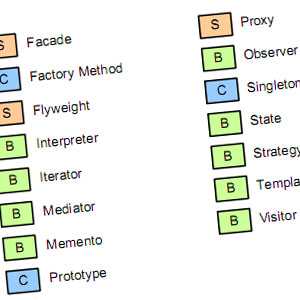
Singleton pattern
Information drawn from
Singleton is a special creational design pattern in which only one instance of a class can exist. It works like this: if no instance of the singleton class exists then a new instance is created and returned, but if an instance already exists, then the reference to the existing instance is returned.
A perfect real-life example would be that of mongoose (the famous Node.js ODM library for MongoDB). It utilizes the singleton pattern.
In this example, we have a Database class that is a singleton. First, we create an object mongo by using the new operator to invoke the Database class constructor. This time an object is instantiated because none already exists. The second time, when we create the mysql object, no new object is instantiated but instead, the reference to the object that was instantiated earlier, i.e. the mongo object, is returned.
class Database {
constructor(data) {
if (Database.exists) {
return Database.instance;
}
this._data = data;
Database.instance = this;
Database.exists = true;
return this;
}
getData() {
return this._data;
}
setData(data) {
this._data = data;
}
}
// usage
const mongo = new Database('mongo');
console.log(mongo.getData()); // mongo
const mysql = new Database('mysql');
console.log(mysql.getData()); // mongo
------------------------------------------------------------------------
Last update on 02 Feb 2020
---